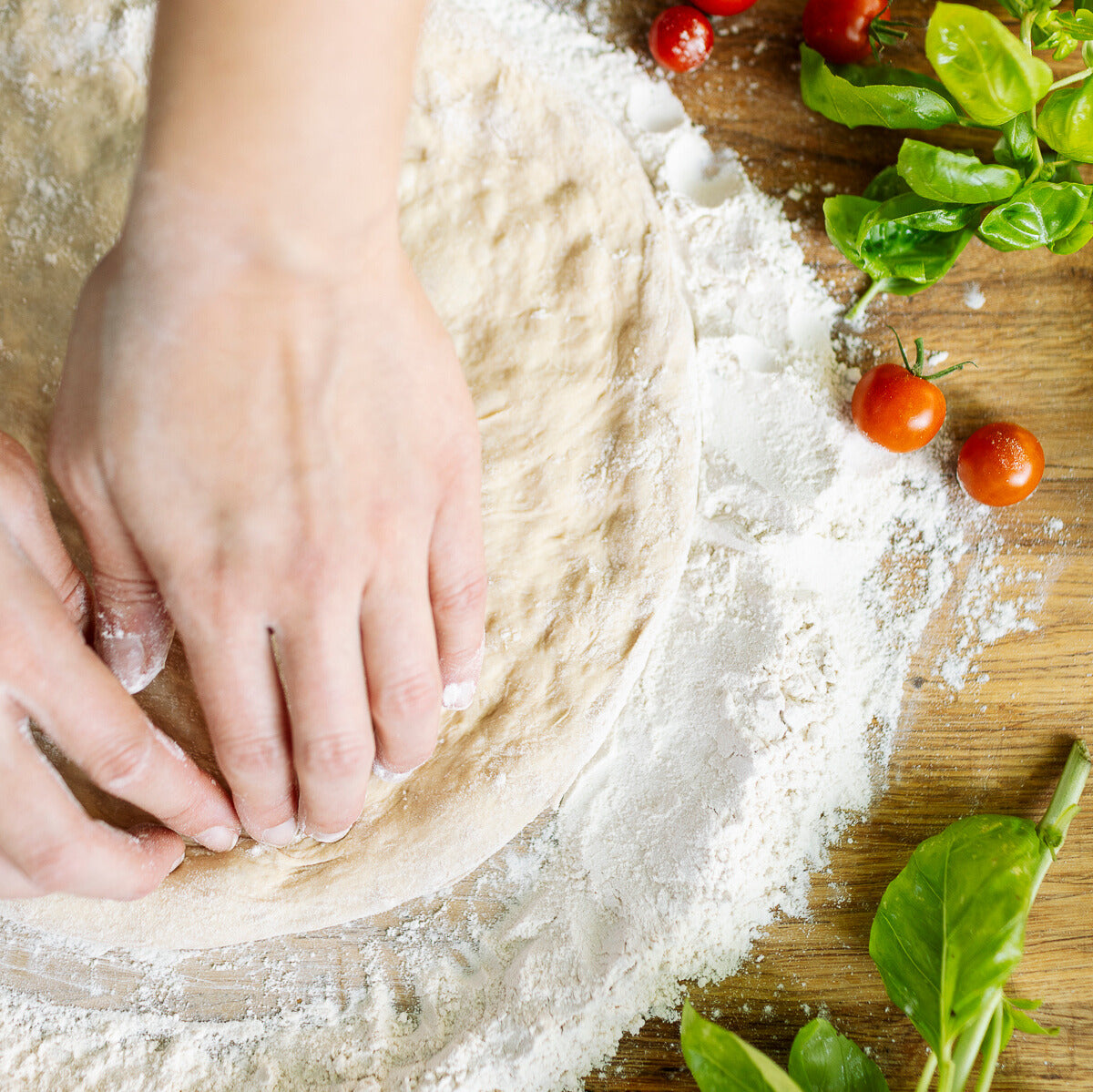Add description, images, menus and links to your mega menu
A column with no settings can be used as a spacer
Link to your collections, sales and even external links
Add up to five columns
Add description, images, menus and links to your mega menu
A column with no settings can be used as a spacer
Link to your collections, sales and even external links
Add up to five columns
Add description, images, menus and links to your mega menu
A column with no settings can be used as a spacer
Link to your collections, sales and even external links
Add up to five columns
Add description, images, menus and links to your mega menu
A column with no settings can be used as a spacer
Link to your collections, sales and even external links
Add up to five columns

Sourdough Pizza Dough
June 25, 2024 4 min read
Sourdough pizza dough using our organic hard white Stardust 00 creates excellent extensibility for that ideal chewy pizza crust! Great for cooking on a pizza stone in the oven or even on the grill! Get creative and have fun with various toppings for pizza night.
Download a printable version of the recipe here.
Sourdough Pizza Dough
*This is an overnight recipe using a sourdough leaven.
Yield: 2 large pizzas (500g each)
Ingredients:
400g water (temp 75-76°F) divided
100g sourdough leaven (previously fed sourdough starter)
10g fine sea salt
Baker’s percentage:
flour 100%
water 80%
leaven 20%
salt 2%
Baker’s Notes:
40 min autolyse
4 hr. bulk fermentation at room temperature (75-77°F)
4-5 folds (coil folds) every 30 min
Ideal dough temperature 74-76°F after 4 hr. bulk fermentation
30 hr. cold ferment (38-39°F)
*Before mixing this dough, a float test of a fed and “just ripe” sourdough leaven is highly recommended to ensure it is ready to use in the dough mix. If the leaven looks really deflated, it will be “sluggish” and may struggle to give. A strong, well-fed leaven should show plenty of bubble activity and look slightly domed on top. Spoon out a piece of leaven and place into a bowl of water. If it floats, it is ready to use. If it sinks, it needs more time to ferment or possibly it has over fermented.
In a large mixing bowl, add 350g of water. Ensure the water temperature is 76°F. Add 100g of ready sourdough leaven and mix with a spoon or your hand until fully dissolved. Add the flour to the wet mixture and mix until a slightly shaggy wet dough has formed. Cover with a towel, set a timer, and allow to autolyse for 40 min.
*Autolyse is a period of rest time right after mixing to allow the flour to properly hydrate. It also helps with gluten development.
After the autolyse period, weigh out 50g of water at 76°F. Add the 10g of salt to the 50g of water and mix to dissolve. Pour the salt water mixture into the dough and begin to mix until the water been has fully absorbed into the dough. At this point, the dough will feel somewhat elastic and wet. Give the dough a couple of simple folds by lifting the dough into itself. Cover the bowl with a towel and set a timer for 30 min.
After 30 min, it will be time for the first fold. The fold method used here is the coil fold. To do a coil fold, use both hands to pull the top end of the dough up and down, continuing this pattern until “coils” are created by the time you reach the bottom of the dough. It should take about 4-5 coil folds in total. With both hands, lift the dough from the middle and make a 180° turn clockwise. The dough should now look smoother and elastic on top. This completes the first fold. Set a timer for 30 min for the next fold.
Follow the above fold method for an additional three more folds, for a total of four folds over the course of the next 1 ½ hours. If the dough feels slightly “sluggish,” give it an additional 5th fold. Periodically check the internal temperature of the dough as this will guide the fermentation process. Ideally, it should remain somewhere between 74-76°F. The cooler the dough gets, the slower the fermentation process. The warmer the dough gets, the faster the dough will ferment. The temperature will also determine the next steps.
*Always go by the temperature and feel of the dough as your guide!
After the last fold and 30 min rest time, turn the dough over onto a moderately floured work surface. Using a bench knife, divide the dough into two dough balls at 500g each. Continue to use the bench knife to round out the dough ball, turning the dough with your hand and the bench knife against the table to create surface tension. This will allow the dough ball to become smooth and elastic. Repeat this process with the second dough ball. Place the dough balls onto a sheet tray lightly sprayed with pan spray or a large rectangular roasting pan if you have one. Spray the top of the dough balls modestly with pan spray to prevent plastic wrap from sticking. Wrap the pan in plastic wrap to completely cover, but do not wrap too tightly so the dough will have room to grow. Place in the fridge and allow to cold ferment for 30 hrs. or until the next evening when ready to use. Remove from the fridge and allow to bench rest for 30-45 min at room temperature. This will allow the dough to begin its final proof and it will be easier to work with when shaping/assembling for pizza.
*Use for any of your preferred pizza toppings. Be sure to find our recipe for a Pulled Pork and Peach pizza on the website using this sourdough pizza dough recipe!
